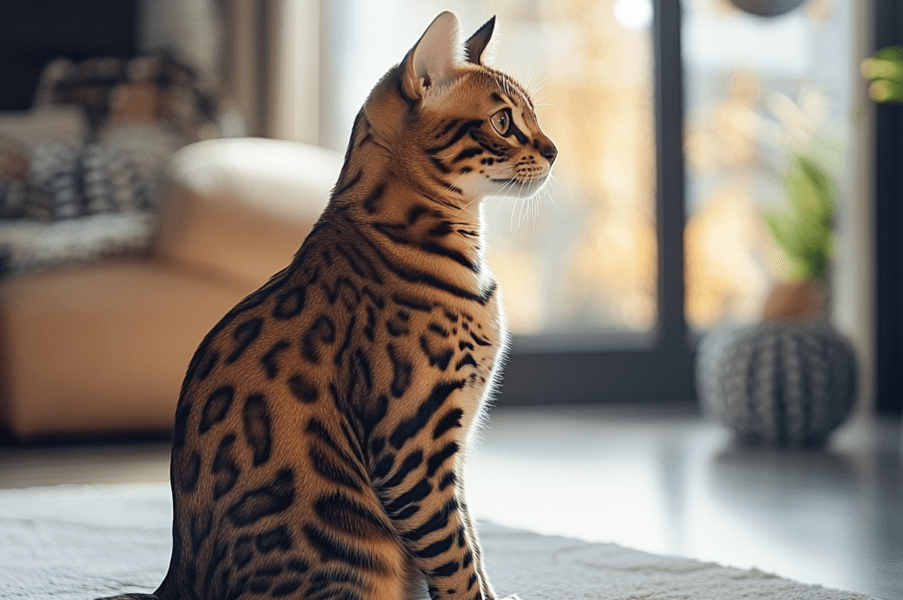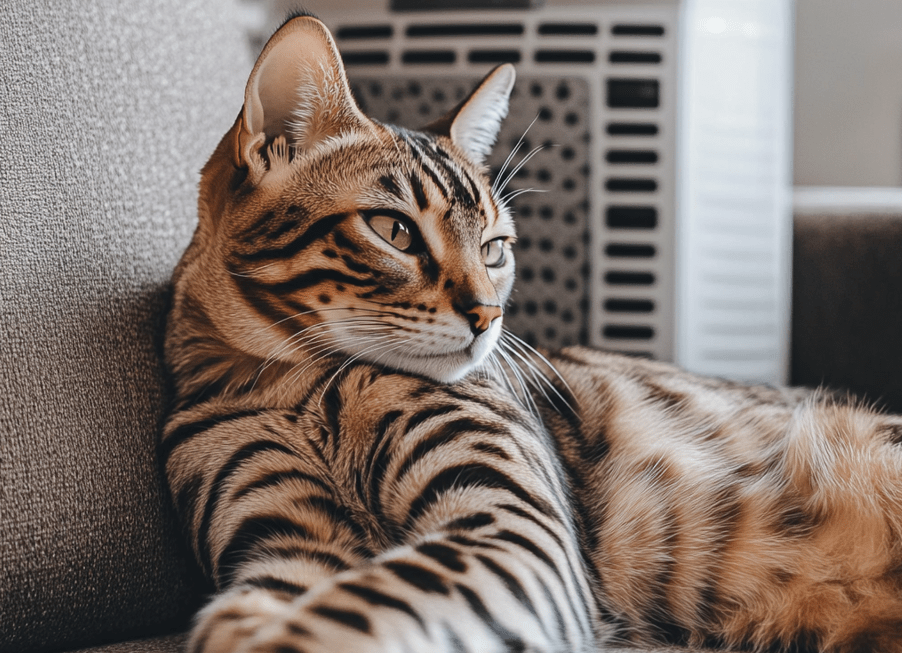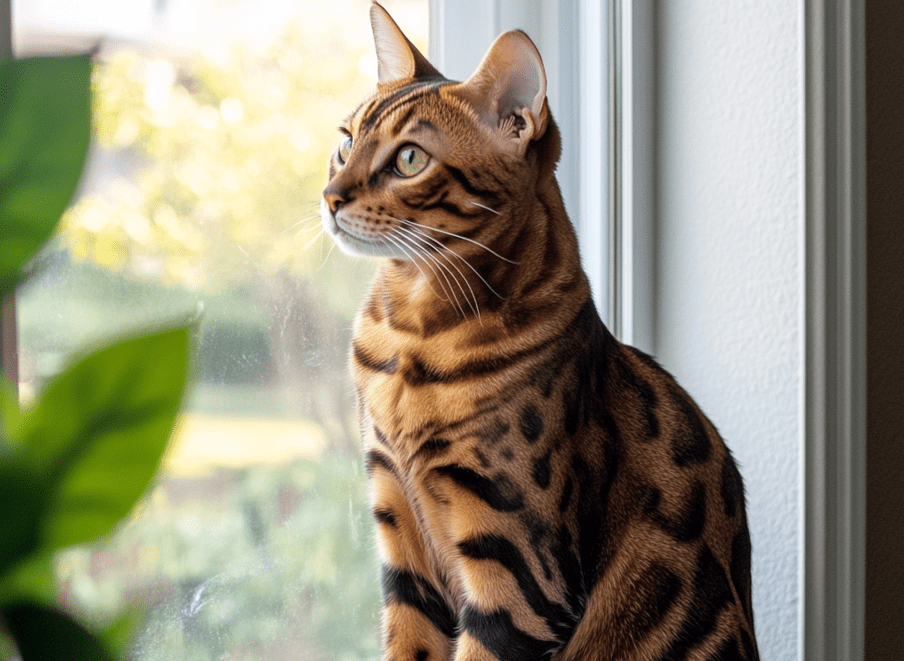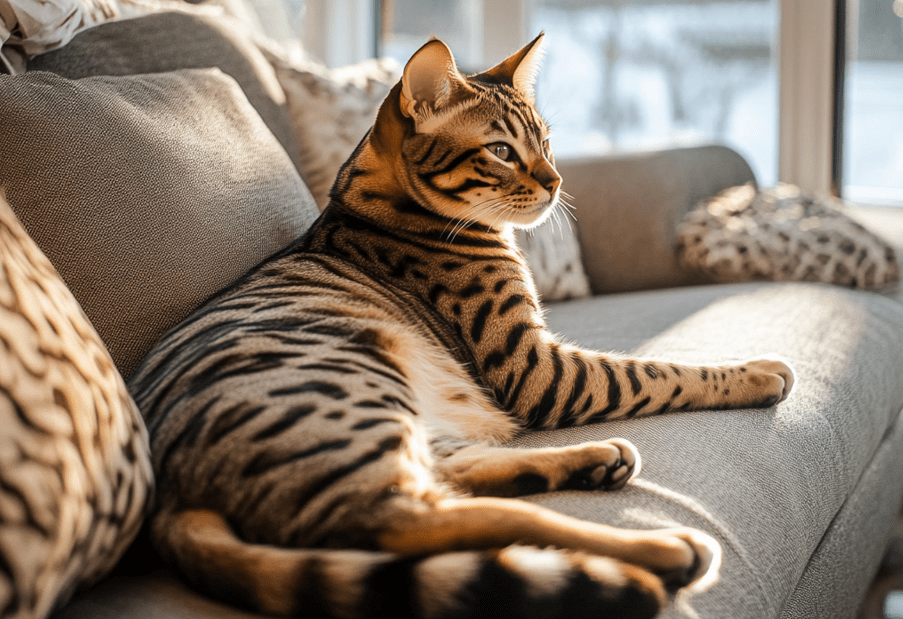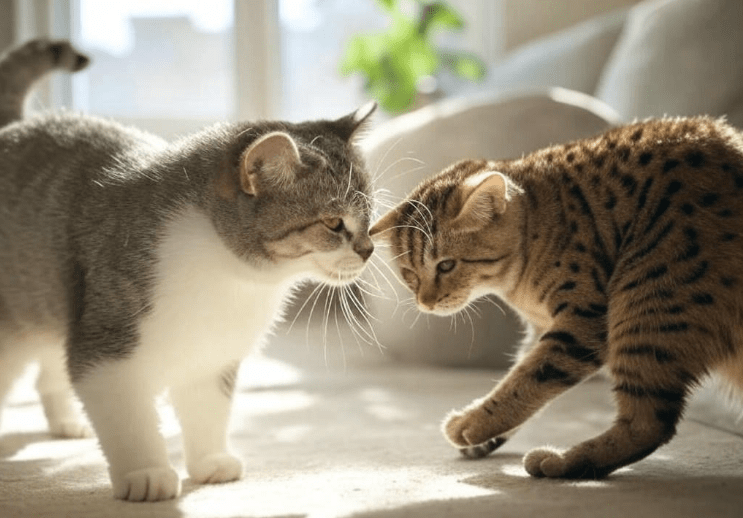
Bengal cats are known for their boundless energy, sharp intelligence, and playful nature. These stunning felines require consistent mental and physical stimulation to stay happy and healthy. One effective strategy to maintain their engagement is to rotate toys for Bengal cats. By regularly switching out their playthings, you can keep your Bengal cat entertained, prevent boredom, and foster a stimulating environment. In this comprehensive guide, we’ll explore why toy rotation is essential, how to implement it effectively, and the best types of toys to keep your Bengal cat engaged.
Why Rotating Toys Matters for Bengal Cats
Bengal cats are a unique breed with a high need for activity and mental challenges. Their wild ancestry, derived from the Asian leopard cat, makes them more curious and energetic than many other domestic breeds. Without adequate stimulation, Bengals can become bored, which may lead to destructive behaviors like scratching furniture, excessive vocalization, or even stress-related health issues.
Rotating toys for Bengal cats helps address these needs by:
Preventing Boredom: Cats can lose interest in toys that are always available. Introducing new or “forgotten” toys keeps their curiosity piqued.
Mimicking Natural Instincts: In the wild, cats encounter varied stimuli. Toy rotation simulates this by offering fresh objects to “hunt” or explore.
Encouraging Physical Activity: Active play with rotating toys helps maintain a healthy weight and supports cardiovascular health.
Enhancing Mental Stimulation: New toys challenge your Bengal’s problem-solving skills, keeping their mind sharp.
By understanding the importance of toy rotation, you can create a dynamic environment that caters to your Bengal’s instincts and energy levels.
Benefits of Toy Rotation for Bengal Cats
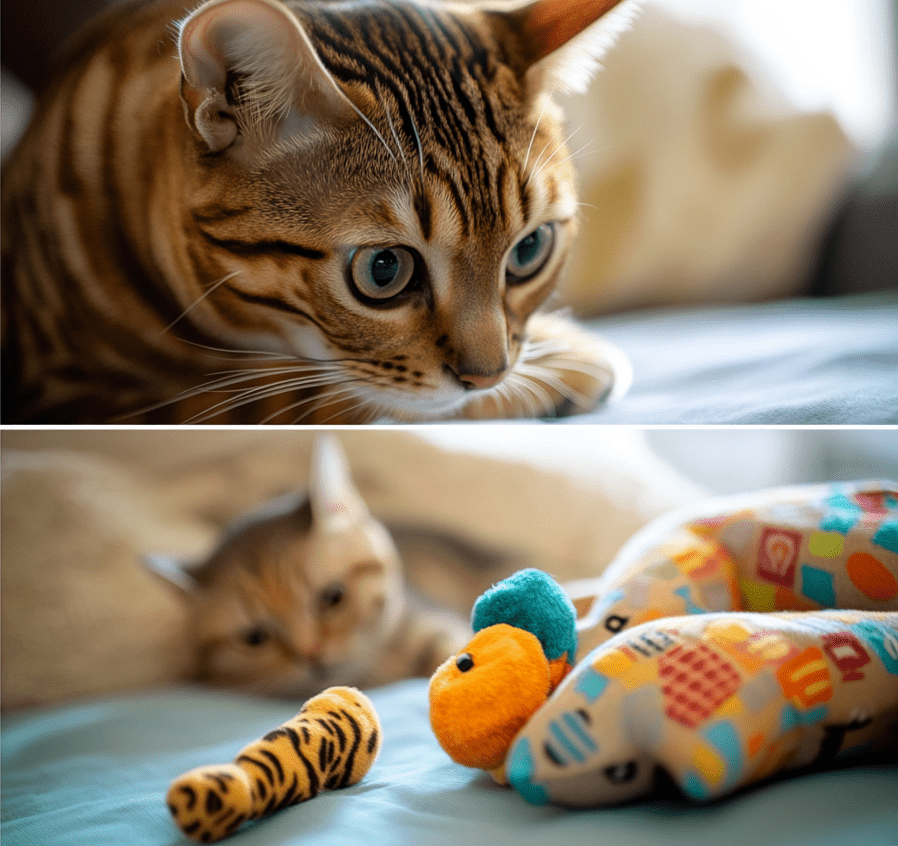
Toy rotation offers numerous advantages that go beyond simply keeping your cat entertained. Here are some key benefits:
Reduces Toy Fatigue: Like humans, cats can grow tired of the same objects. Rotating toys ensures they remain novel and exciting.
Cost-Effective: Instead of constantly buying new toys, you can cycle through existing ones, saving money while keeping playtime fresh.
Supports Behavioral Health: Engaged cats are less likely to develop anxiety or exhibit unwanted behaviors.
Strengthens Bonding: Interactive play with rotated toys provides opportunities to connect with your Bengal, reinforcing trust and affection.
Encourages Variety: Different toys target various skills, such as hunting, pouncing, or problem-solving, ensuring well-rounded stimulation.
How to Rotate Toys for Bengal Cats: A Step-by-Step Guide
Implementing a toy rotation system is simple and highly effective. Follow these steps to keep your Bengal cat engaged:
Step 1: Assess Your Current Toy Collection
Take stock of the toys your Bengal already has. Categorize them into types, such as:
Interactive Toys: Wand toys, laser pointers, or feather teasers that require your participation.
Solo Play Toys: Balls, stuffed mice, or spring toys your cat can play with independently.
Puzzle Toys: Treat-dispensing toys or puzzle boards that challenge cognitive skills.
Comfort Toys: Soft toys or items infused with catnip for relaxation.
Ensure you have a variety of toys to cater to your Bengal’s diverse needs. If your collection is limited, consider investing in a few new items to enhance the rotation.
Step 2: Create a Rotation Schedule
Establish a schedule for swapping out toys. A common approach is to rotate toys every 1-2 weeks, but you can adjust based on your cat’s behavior. For highly active Bengals, weekly rotations may work better to maintain interest.
Weekly Rotation: Swap out 3-5 toys each week, storing the others out of sight.
Biweekly Rotation: Change toys every two weeks for cats with moderate play drive.
Seasonal Rotation: Introduce themed toys (e.g., crinkle leaves in fall) to align with environmental changes.
Step 3: Store Unused Toys Properly
To make rotated toys feel “new,” store them in a place where your Bengal can’t access them. Use airtight containers to preserve scents, especially for catnip-infused toys. You can also refresh toys by adding a pinch of catnip or silvervine before reintroducing them.
Step 4: Introduce Toys Strategically
When bringing out a “new” toy, make it exciting:
Interactive Play: Use wand toys or laser pointers to engage your Bengal in a high-energy play session.
Hide and Seek: Hide small toys under blankets or in boxes to spark your cat’s hunting instincts.
Puzzle Challenges: Set up puzzle toys with treats to encourage problem-solving.
Vary the way you present toys to keep playtime dynamic.
Step 5: Observe and Adapt
Pay attention to your Bengal’s preferences. If they consistently ignore certain toys, consider replacing them with something more engaging. Conversely, if a toy is a favorite, you might keep it in rotation longer but still store it occasionally to maintain its appeal.
Step 6: Incorporate DIY Toys
You don’t need to rely solely on store-bought toys. DIY options can be just as effective and add variety. Examples include:
1.Cardboard boxes with cutouts for exploration.
2.Crumpled paper balls for batting.
3.Toilet paper rolls stuffed with treats.
DIY toys are budget-friendly and allow you to customize play experiences.
Best Types of Toys for Bengal Cats
Choosing the right toys is critical for a successful rotation strategy. Bengals thrive on toys that engage their physical and mental abilities. Here are the top categories and specific recommendations:
1. Interactive Wand Toys
Wand toys mimic prey, satisfying your Bengal’s hunting instincts. Look for durable options with interchangeable attachments.
Recommended: Da Bird Feather Teaser (features realistic feather movements).
Tip: Rotate attachments (e.g., feathers, ribbons) to keep the wand toy fresh.
2. Puzzle and Treat-Dispensing Toys
Puzzle toys stimulate your Bengal’s intelligence and reward them with treats.
Recommended: Trixie Activity Fun Board (offers multiple challenges).
Tip: Vary the treats used to maintain interest.
3. Solo Play Toys
These toys keep your Bengal entertained when you’re not home.
Recommended: Petstages Tower of Tracks (engages with spinning balls).
Tip: Rotate between balls, mice, or springs to prevent monotony.
4. Catnip and Silvervine Toys
Catnip or silvervine-infused toys provide sensory stimulation.
Recommended: Yeowww! Catnip Banana (durable and potent).
Tip: Store in a sealed bag to preserve the scent.
5. Electronic Toys
Motion-activated or battery-powered toys add an element of surprise.
Recommended: Hexbug Nano Cat Toy (mimics scurrying prey).
Tip: Use sparingly to avoid overstimulation.
6. DIY and Household Items
Everyday items can become engaging toys.
Examples: Cardboard boxes, ping pong balls, or paper bags.
Tip: Rotate these items frequently, as they’re easy to replace.
Common Mistakes to Avoid When Rotating Toys
To maximize the benefits of toy rotation, steer clear of these pitfalls:
Rotating Too Infrequently: If toys are left out too long, your Bengal may lose interest. Stick to a consistent schedule.
Overwhelming with Too Many Toys: Offering too many toys at once can reduce their novelty. Limit active toys to 3-5 at a time.
Ignoring Preferences: Not all toys suit every cat. Observe what excites your Bengal and prioritize those types.
Neglecting Interactive Play: Bengals thrive on human interaction. Balance solo toys with interactive sessions.
Poor Storage: Leaving stored toys accessible allows your cat to find them, reducing the “new toy” effect.
Additional Tips for Keeping Your Bengal Cat Engaged
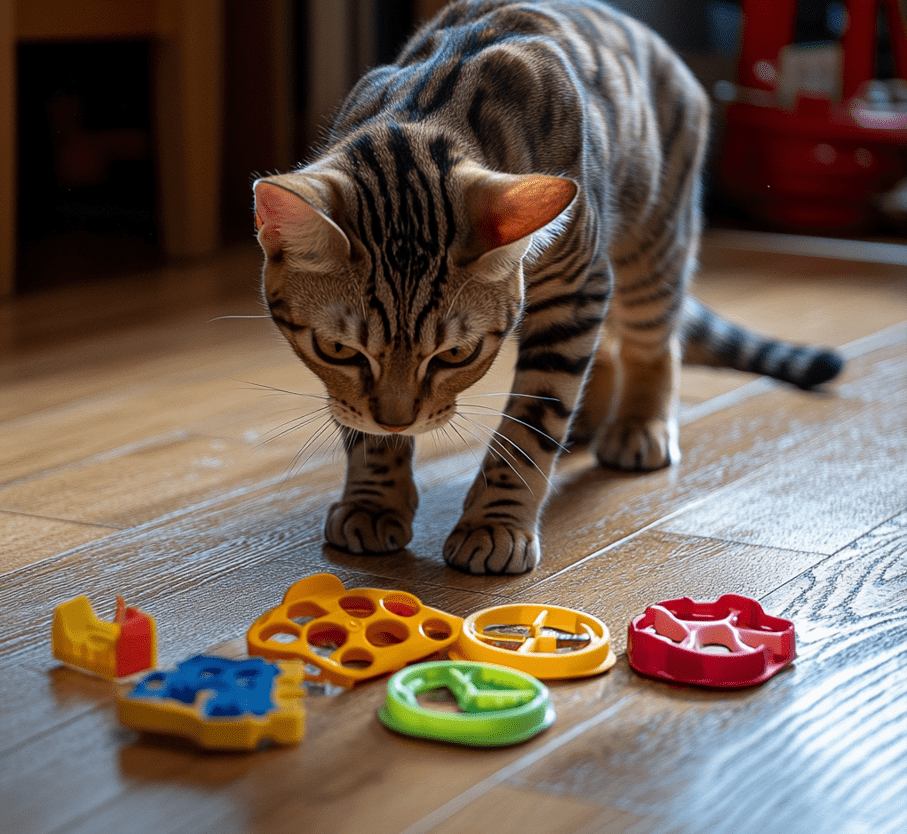
Toy rotation is just one part of keeping your Bengal happy. Here are additional strategies to complement your efforts:
Create an Enriched Environment
Bengals love vertical spaces and exploration. Provide:
Cat Trees: Multi-level trees for climbing and perching.
Window Perches: For bird-watching and environmental stimulation.
Tunnels: For hiding and pouncing.
Rotate the placement of these items to keep the environment fresh.
Incorporate Training
Bengals are highly trainable. Use toys to teach tricks like “fetch” or “jump.” This engages their mind and strengthens your bond.
Schedule Play Sessions
Dedicate 15-30 minutes daily to interactive play. Morning and evening sessions align with your Bengal’s natural activity peaks.
Monitor Health and Behavior
Changes in play behavior can signal health issues. If your Bengal seems disinterested in toys, consult a veterinarian to rule out underlying problems.
How Often Should You Rotate Toys?
The ideal rotation frequency depends on your Bengal’s personality and activity level:
High-Energy Bengals: Rotate weekly to match their need for novelty.
Moderate-Energy Bengals: Biweekly rotations are often sufficient.
Senior Bengals: Monthly rotations may work, as older cats may prefer familiar toys.
Experiment to find the sweet spot for your cat.
Signs Your Bengal Cat Is Engaged
A well-executed toy rotation strategy will result in a happy, active Bengal. Look for these signs:
1.Enthusiastic play with toys.
2.Reduced destructive behaviors.
3.Increased vocalization during play (a sign of excitement).
4.Healthy appetite and energy levels.
If your Bengal seems disinterested, reassess your toy selection or rotation schedule.
Conclusion
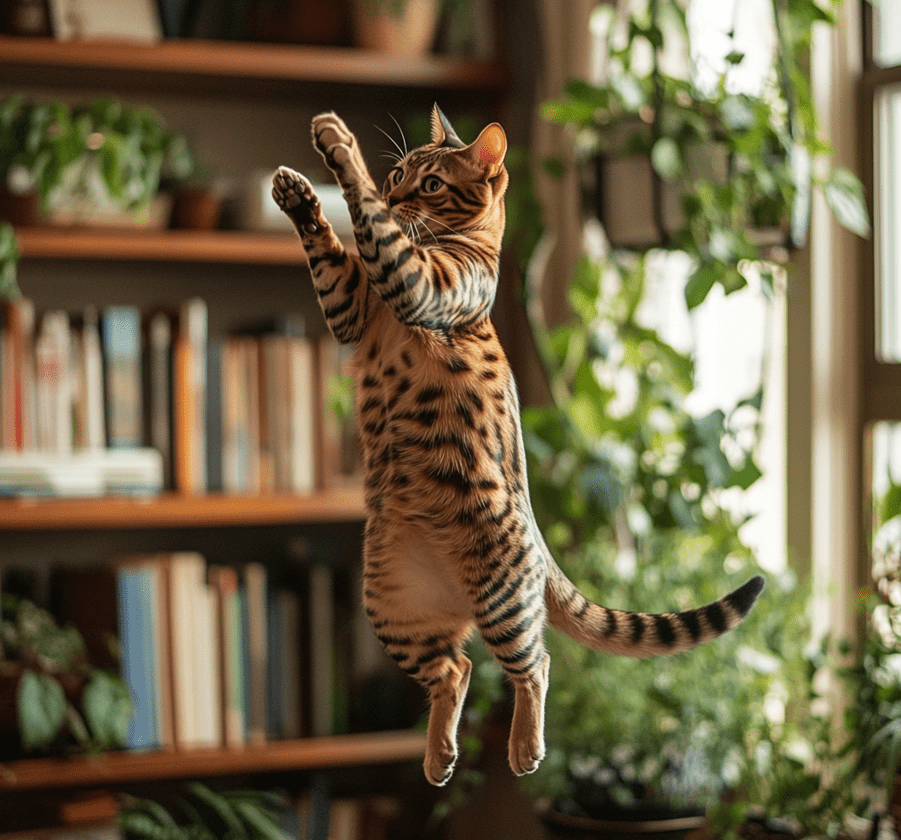
Rotating toys for Bengal cats is a simple yet powerful way to keep your feline friend engaged, healthy, and happy. By regularly switching out toys, you tap into their natural curiosity and provide the mental and physical stimulation they crave. With a thoughtful rotation schedule, a variety of toys, and a commitment to interactive play, you can create a dynamic environment that keeps your Bengal cat thriving.
Start implementing toy rotation today, and watch your Bengal’s playful spirit shine. By following the strategies outlined in this guide, you’ll not only prevent boredom but also deepen your bond with your energetic companion.

